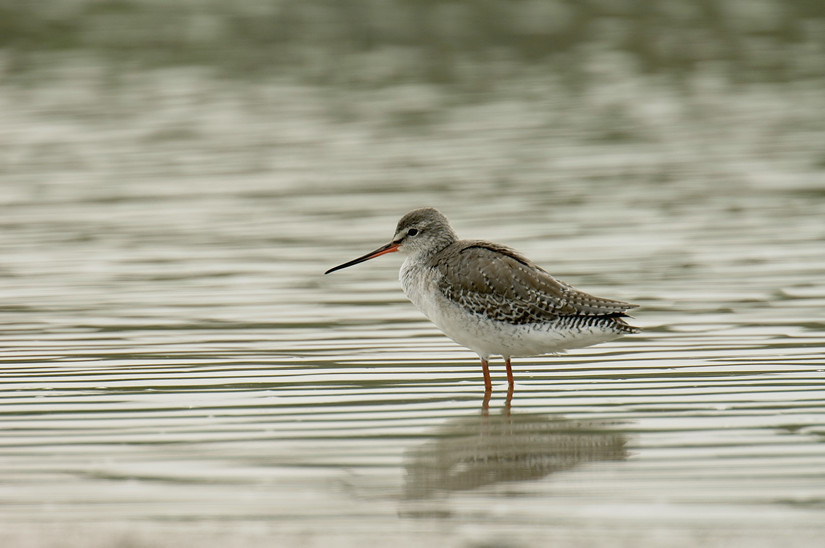March

During the migration period of birds in early March and when the tidal level is suitable, it is not difficult to encounter the scene that the mudflat is fully occupied by the resting waterfowls. An experienced bird watcher can identify different types of egrets, herons, spoonbills, cormorants, ducks, and waders from thousands of waterfowls. Within these waterfowls, the difficulty in identifying waders is yet the highest and most challenging as all.
To identify the waders, neither good eyesight nor technique can be missed out. Take Spotted Redshank as an example, one can identify it from thousands of waders on the mudflat by focusing on their body features, size, and migration behaviour.
Spotted Redshank is a medium-sized wader, with size similar to a dove. When in groups with Wood Sandpiper or Marsh Sandpiper, the Redshank looks like a little giant. However where it stands next to Curlews, the Sandpiper becomes a dwarf. Owing to the similar appearance, the Spotted Redshank with non-breeding plumage is often being misidentified as a Common Redshank. As both of them have orange-red legs, hence, we have to focus on the colour of their bills. Spotted Redshank has red base at lower bill and black base at upper bill, whereas both upper and lower bill bases for Common Redshank are red. The difference in appearance between breeding Spotted Redshank and Common Redshank is much more obvious. The breeding individual of the Spotted Redshank is quite eye-catching with entirely black plumage and white dots on the upperparts.
Spotted Redshank overwinters in Hong Kong, and mainly appear in November to April. They like to feed in mudflat in small clusters, and sometimes even swim. If you want to meet them, do mind the timing. Come to Hong Kong Wetland Park and look for them from Mudflat Hide before they fly back to the North for breeding.